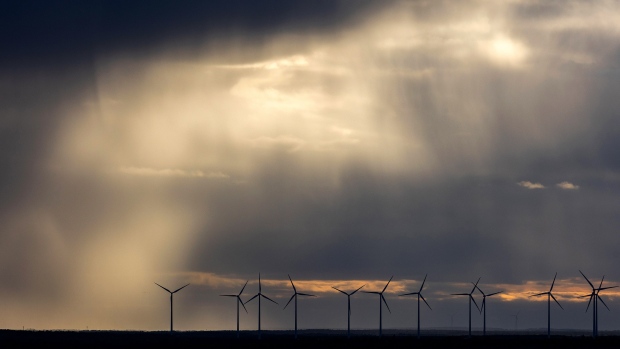Dec 21, 2023
German Wind Power Hits Record as Storms Batter North Europe
, Bloomberg News

(Bloomberg) -- Wind power output reached a record high in both Germany and the UK on Thursday as a storm covering northern Europe boosts generation across the region.
Production in the UK hit 21,813 megawatts, breaking a previous record set in January, according to National Grid data. Meanwhile in Germany, wind generation reached 53,013 megawatts at 11 a.m. Berlin time, according to European Energy Exchange data.
German weather service DWD on Thursday warned of dangerous hurricane-like gusts, particularly at sea and in mountainous areas. Wind speeds may reach as much as 100 kilometers (62 miles) per hour as a low-pressure system named Pia is moving south from Sweden and Denmark.
Meanwhile in the UK, the strong gusts are having an impact on infrastructure. Train journeys from London to the north are now delayed or canceled as more people start traveling for the holidays.
Wind power is Germany’s top source of renewable energy, followed by solar. The share of green sources this year made up more than half of the nation’s electricity production for the first time ever, according to preliminary calculations from the Center for Solar Energy and Hydrogen Research and the German Association of Energy and Water Industries. That compares with 44% last year.
“The combination of strong wind feed-in and increasing — albeit too slow — expansion means that we are seeing an ever-increasing output of wind energy,” said Philipp Godron, head of the electricity program at Agora Energiewende. “Wind energy is the workhorse of the energy transition and is particularly helpful in winter when we have the highest power demand.”
The country is struggling to build additional capacity amid challenges facing developers, including higher borrowing costs and slow approval procedures.
The UK’s Met Office has yellow warnings in place for strong winds for Thursday. Power generation from turbines covered more than 55% of the country’s total power demand at 2p.m. on Thursday, according to grid data.
Output in Germany is set to surge even higher on Thursday, potentially reaching 58,595 megawatts at 5 p.m. local time, according to a Bloomberg Model.
--With assistance from Priscila Azevedo Rocha and Jessica Shankleman.
(Updates with UK record)
©2023 Bloomberg L.P.






